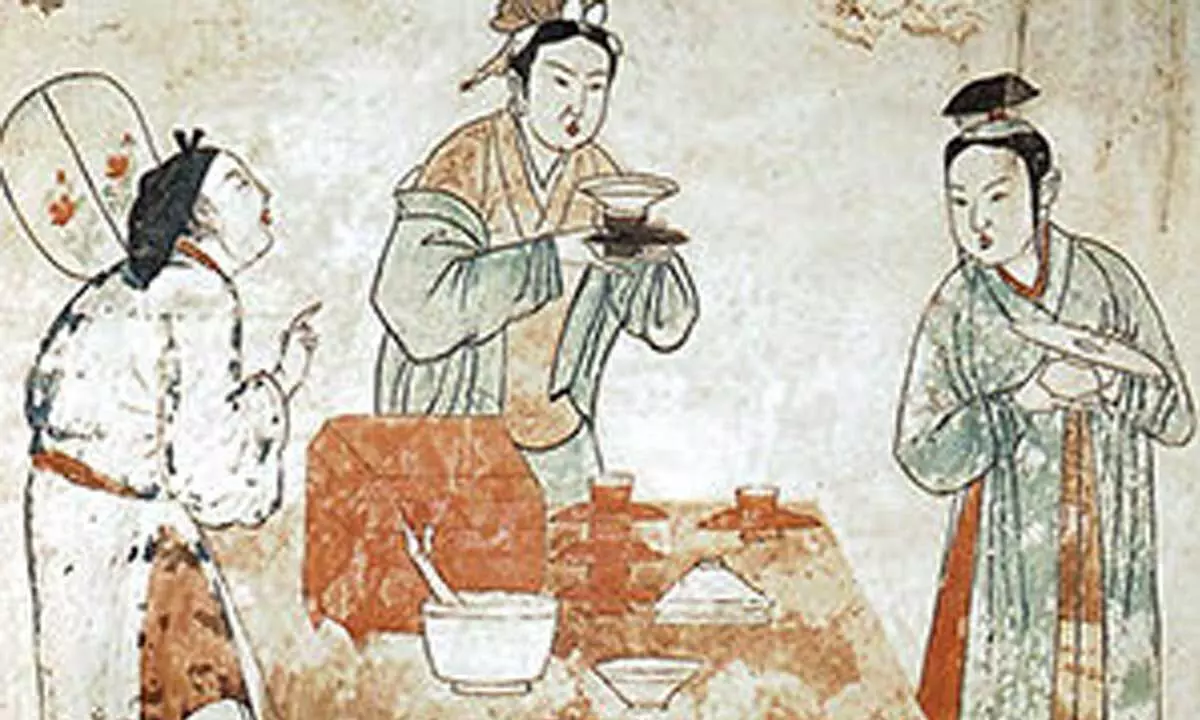Know Why China's Ancient Tea making Techniques is Intangible Cultural Heritage Recognized by UNESCO

Representational image
- Tea is ubiquitous in Chinese people's daily life, as steeped or boiled tea is served at home, workplaces, tea houses, restaurant and temples to name a few. It is also important part of varied social events and ceremonies such as weddings and praying to ancestors.
- Wuyi Mountain in Fujian is home to one of the oldest as well as largest tea gardens in China thanks to its region's natural environment.
Tea is ubiquitous in Chinese People's daily life and it has also influenced the lives of people across the world through the silk road. It is a pleasure to see the successful application of this ancient art.
Tea is ubiquitous in Chinese people's daily life, as steeped or boiled tea is served at home, workplaces, tea houses, restaurant and temples to name a few. It is also important part of varied social events and ceremonies such as weddings and praying to ancestors.
Depending on the natural conditions as well as local customs, Chinese tea producers have developed six categories of tea, green, yellow, dark, white, oolong and black and there are other varieties like flower, scented teas and more than 2000 tea products.
Processing tools include woks, bamboo trays and drying frames while core steps consist of shaqing (enzyme inactivation), menhuang, (yellowing), wodui(piling), weidia(withering) zuoquing(leaf shaking and cooling), fajiao(oxidation or fermentation) and yinzhi(scenting). All these teas, with their diverse colors, aromas and flavors, meet the different needs of the people.
Because of various natural growing conditions are more suitable for certain types of tea, the different categories of tea are distributed into diverse regions across China. The application for the list was jointly submitted by varied organization from these regions, including the cultural Center of Wyishan, which is responsible for safeguarding, wuyi Rock Tea (Dahongpao Tea) and the longjing Tea Industry Association of the XIhu district in Hangzhou, East China's Zhejang province, which is responsible for Green Tea (West Lake Longjing Tea).
Wuyi Mountain in Fujian is home to one of the oldest as well as largest tea gardens in China thanks to its region's natural environment. Provincial intangible inheritor of tea-making technique Zhang Zhifeng from Fujian also established his workshop here, attracting hundreds of students each year.
Due to changes, which have occurred over tea's extremely long history, tea making process has become very complicated and diverse today.
In order to comply with the rather strict steps, which might include dozens of smaller steps, generally speaking, it takes about half a month to complete the beginning process such as tea picking, selecting and drying. However, in order to reach the most refined standard, it takes at least a whole month only to dry the tea as dry as it can get. So it takes numerous months alone before a batch of good tea products are ready for consumers.
Value of harmony
Speaking of the reasons, as to why the application succeeded, the UNESCO, stated that, China's tea culture has helped in nurturing social practices, traditional skills and handicrafts and reflect Chinese people's values of modesty, harmony and respect.
Mainly because of its profound history of Chinese Tea culture, which trekked along the ancient Tea 618horse road, a network of Caravan routes, which can be traced back to the Tang dynasty(618-907) to reach as far as West Asia and East Africa.
The inclusion on the UNESCO list is sure to have a significant impact on further development and preservation of tea culture.
















